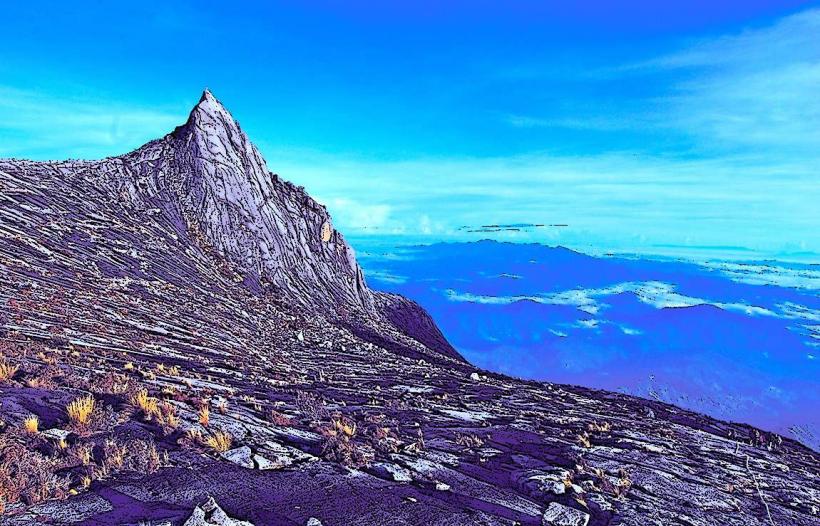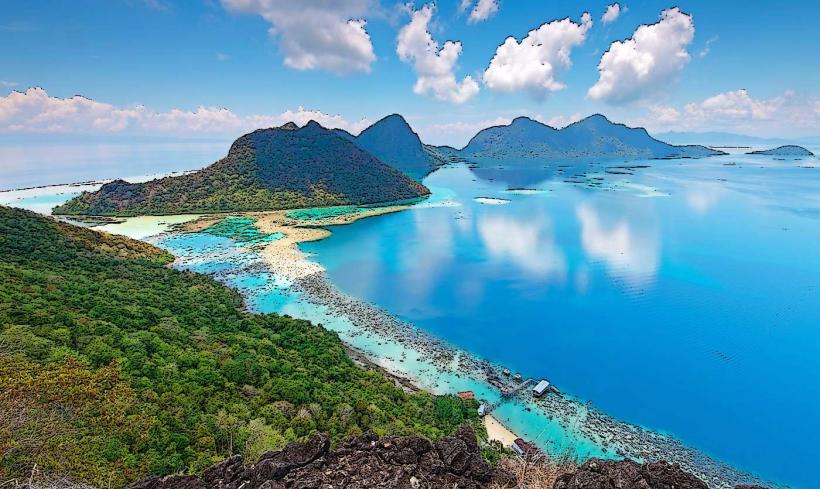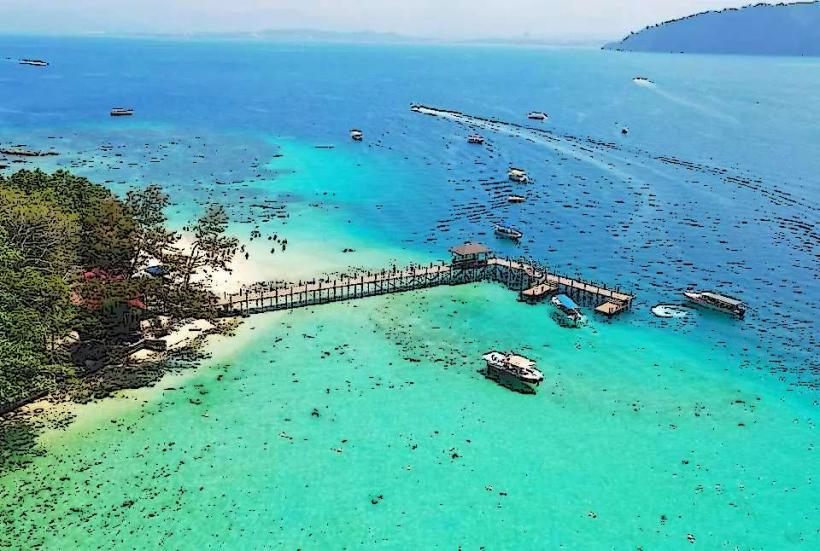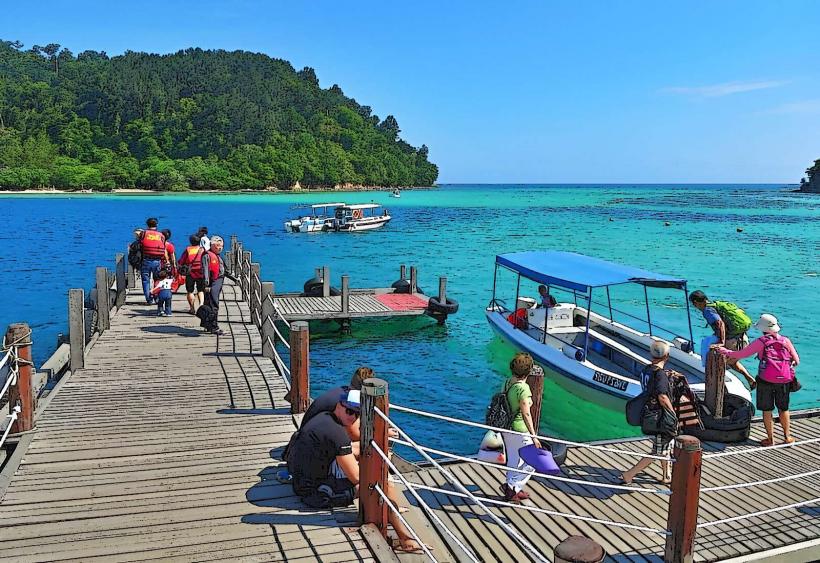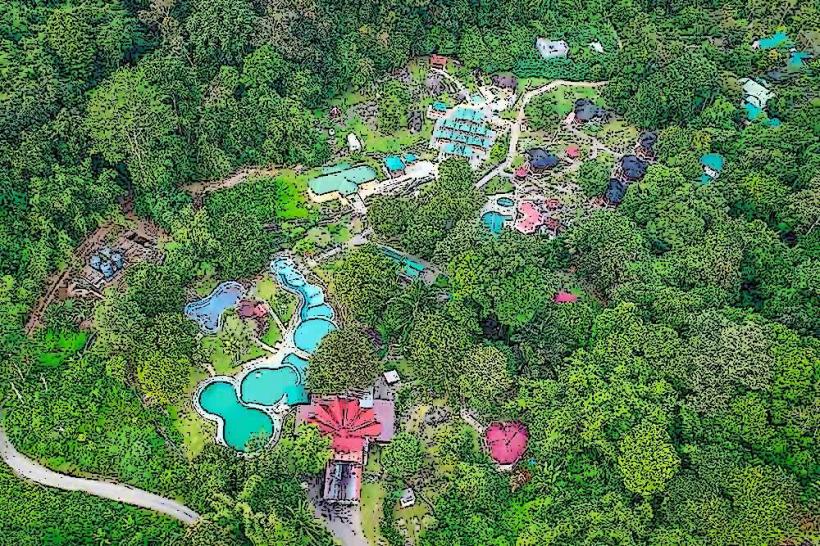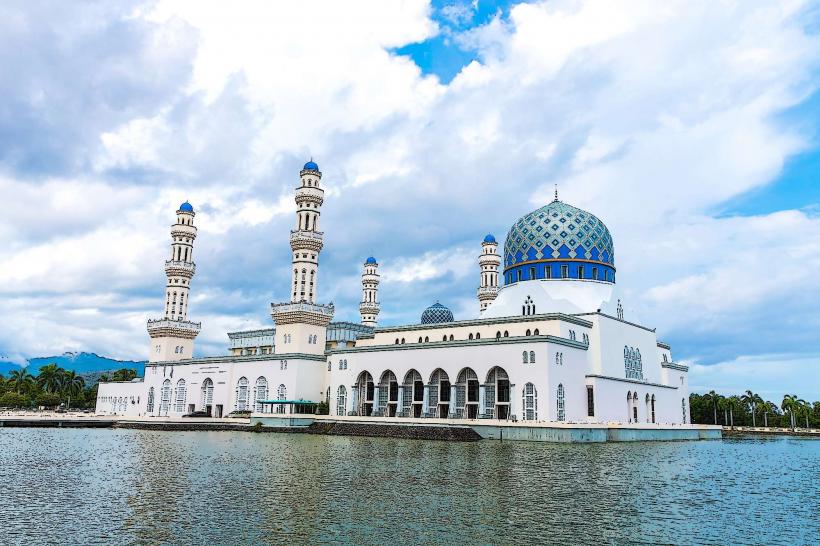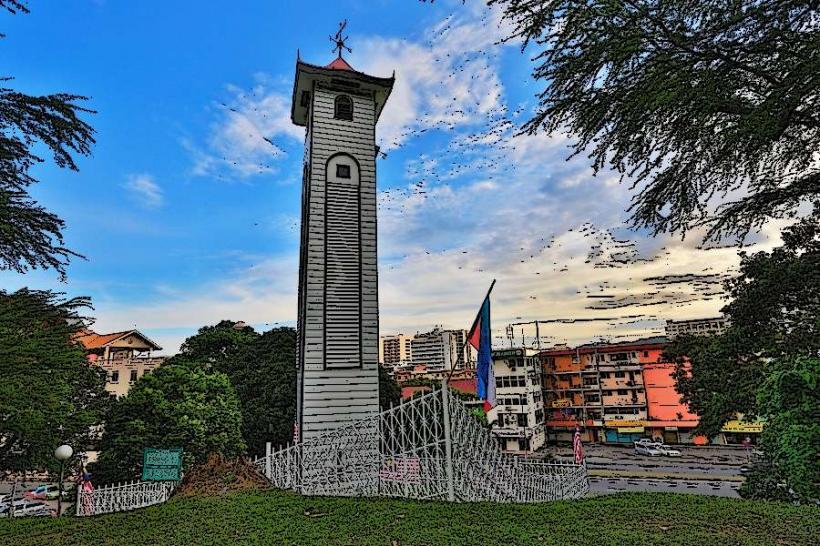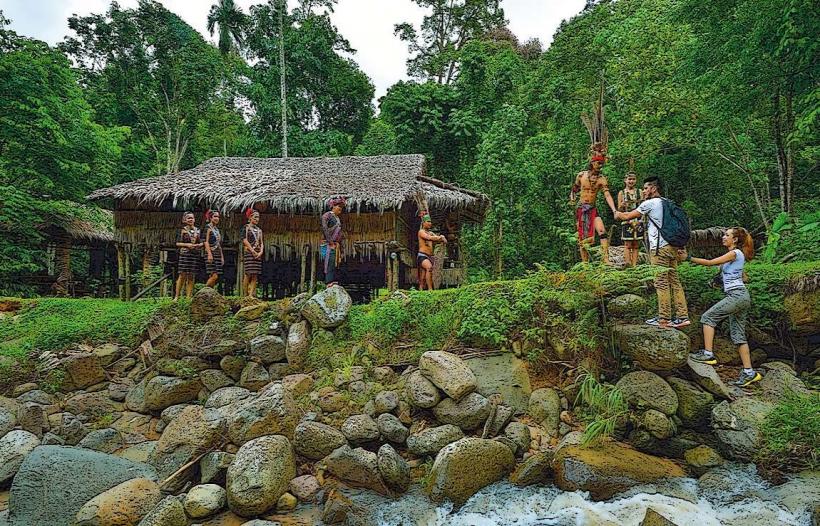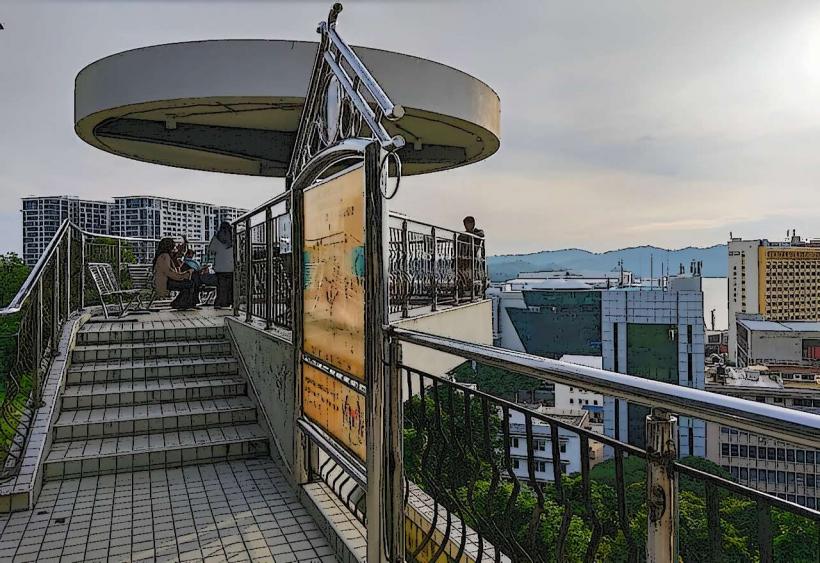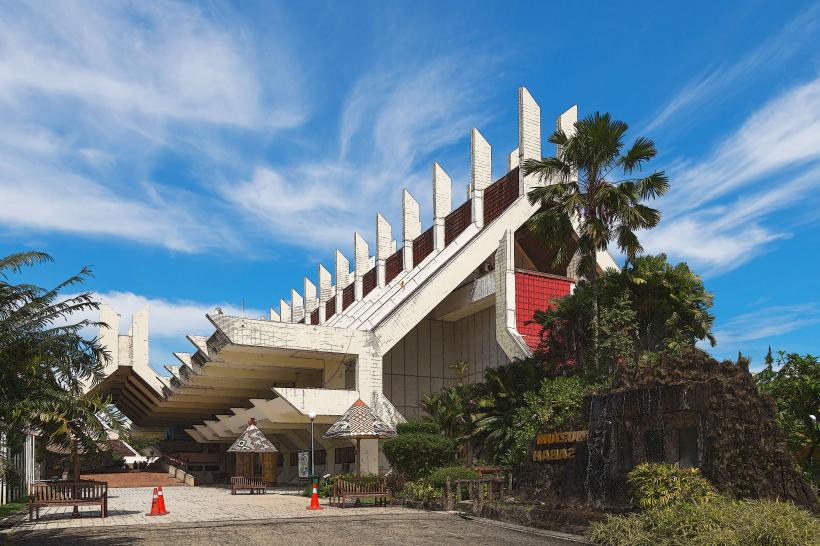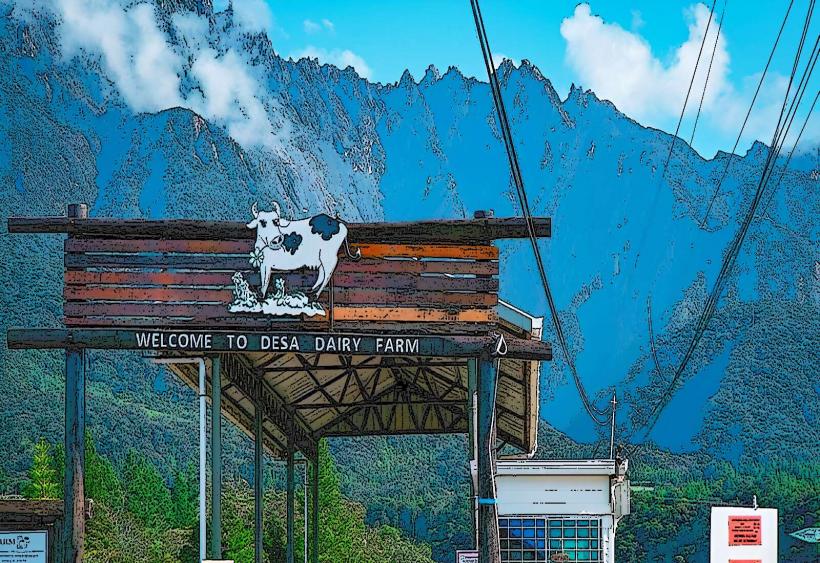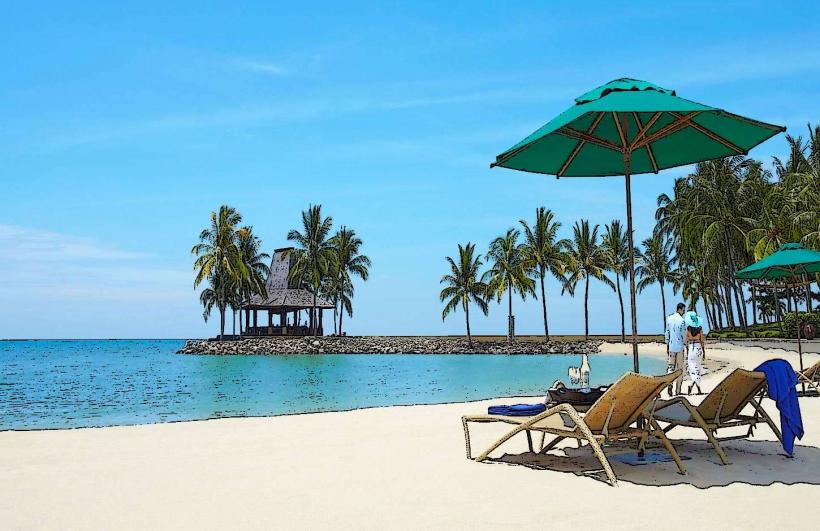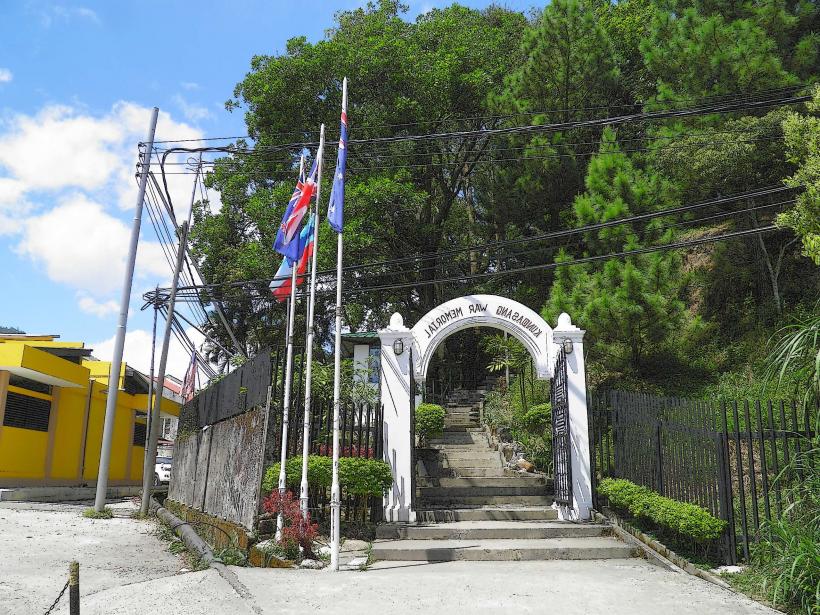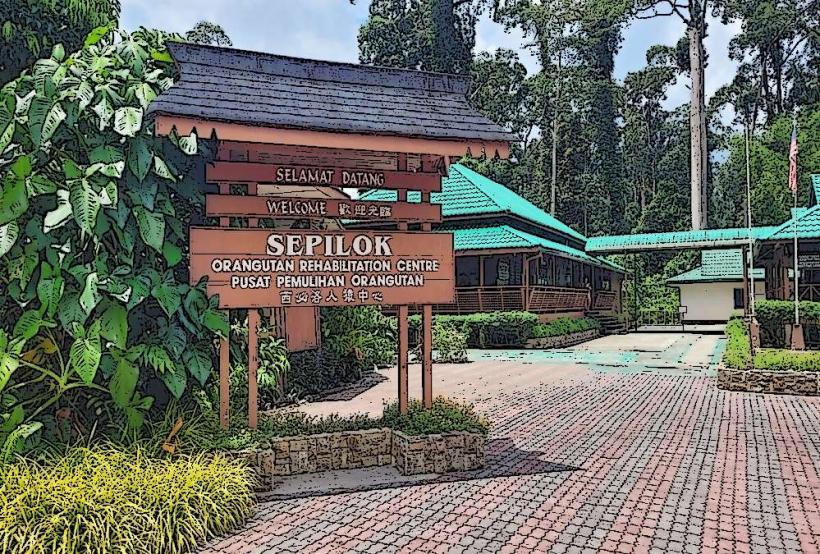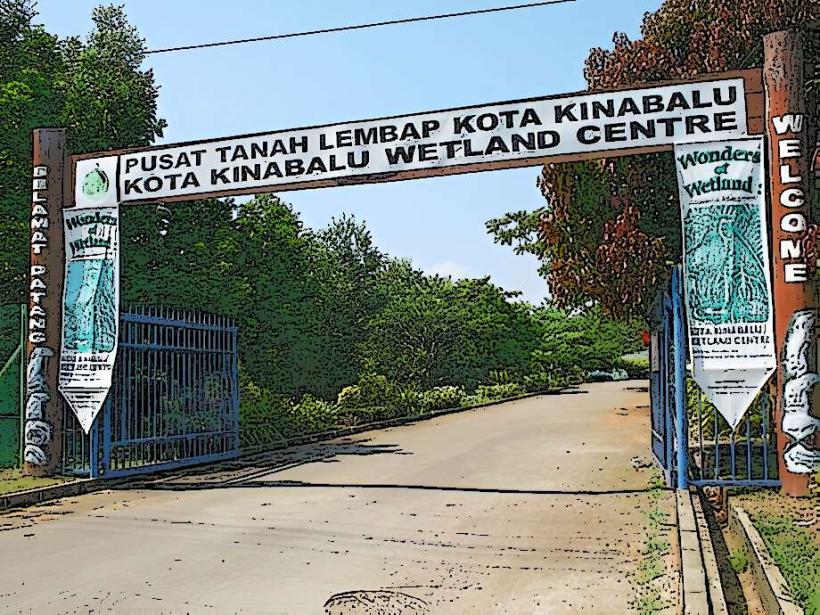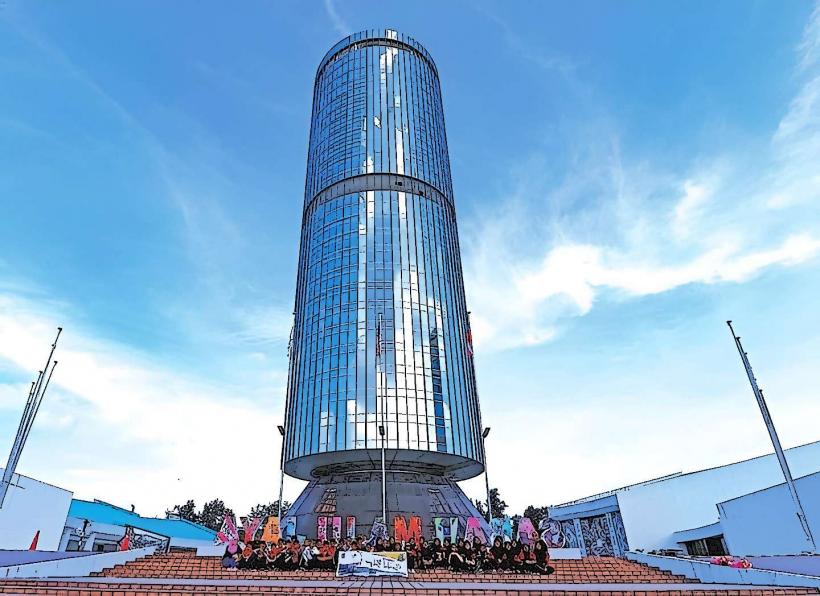Information
Landmark: Kinabalu ParkCity: Kota Kinabalu
Country: Malaysia
Continent: Asia
Kinabalu Park is a UNESCO World Heritage Site located in the state of Sabah, on the island of Borneo, Malaysia. It is one of the most renowned and important natural attractions in the region and is celebrated for its rich biodiversity, stunning landscapes, and its role as a vital conservation area. The park is home to Mount Kinabalu, the highest peak in Southeast Asia, which draws climbers from around the world.
Overview
- Designation: UNESCO World Heritage Site (since 2000)
- Location: About 90 kilometers from Kota Kinabalu, the capital city of Sabah.
- Area: Kinabalu Park spans approximately 754 square kilometers (about 291 square miles), encompassing a wide range of ecosystems, from tropical lowland rainforests to alpine meadows.
- Climate: The park experiences a cool, tropical climate with temperatures ranging from 10°C to 20°C in the highlands and up to 30°C at lower elevations.
Key Highlights
Mount Kinabalu:
- Height: 4,095 meters (13,435 feet) above sea level, making it the tallest peak in Malaysia and Southeast Asia.
- Climbing Mount Kinabalu: Climbing the mountain is one of the most popular activities in the park. It’s a non-technical climb, but it requires a permit, and climbers must ascend with a licensed guide.
- The climb takes 2 days: The first day involves a trek to Laban Rata, the base camp, and the second day is an early morning summit attempt.
- The summit, Low's Peak, offers spectacular views of the surrounding landscape, including cloud forests, valleys, and, on clear days, distant views of the South China Sea.
Biodiversity:
- Kinabalu Park is a biodiversity hotspot, with over 5,000 species of plants, 400 species of birds, and 100 species of mammals.
- Plant life: The park is home to a wide variety of orchids, rhododendrons, and pitcher plants (including the rare Nepenthes rajah), some of which are found only in this region.
- Wildlife: Notable animals include the Bornean pygmy elephant, the Kinabalu giant earthworm, and a variety of endemic species like the Kinabalu brown-falcon and the mountain treeshrew.
Nature Trails:
- The park features numerous nature trails for visitors to explore, offering opportunities to view diverse ecosystems, including tropical rainforests, montane forests, and alpine meadows.
- Some popular trails include the Silau-Silau Trail, Kipungit Waterfall Trail, and the Poring Hot Springs trail. These trails range from short walks to longer, more challenging hikes.
Poring Hot Springs:
- Located at the southern entrance of the park, Poring Hot Springs is one of the park’s most famous attractions. Visitors can relax in natural hot springs surrounded by lush forest.
- The area also features a Canopy Walk, where you can walk among the treetops and enjoy the sights of the tropical rainforest from above.
Bird Watching:
- Kinabalu Park is a paradise for bird watchers, with more than 300 species of birds recorded, including endemic species such as the Kinabalu leaf warbler and the Sabah partridge.
- Bird watching can be done along the park's trails, particularly in the Montane forests and cloud forests.
Flora & Fauna:
- The park’s varied elevations create multiple habitats, leading to a diversity of plant and animal life. Visitors can see everything from lowland tropical plants at the park’s lower altitudes to alpine flora at higher elevations.
- The park is also famous for its unique plant species, including Rafflesia, the world's largest flower, which blooms in the nearby rainforest.
Accommodation
- Kinabalu Park offers a variety of accommodations, from basic chalets to more comfortable resorts. Some of the popular accommodation options include:
- Mountain Lodges: Located near the base of the mountain for those undertaking the climb.
- Kinabalu Park Headquarters Accommodation: Basic chalets and rooms within the park’s main compound, close to trails and visitor centers.
- Poring Hot Springs Resort: Offers more luxurious stays with access to the hot springs and a relaxing environment.
Visitor Facilities
- Visitor Center: The park has an informative Visitor Centre where guests can learn about the park’s flora and fauna, maps, and available activities. It is also a place to get information on climbing Mount Kinabalu.
- Guides and Tours: The park provides licensed guides for those who wish to explore its trails or ascend Mount Kinabalu. These guides are knowledgeable about the park’s wildlife and ecology.
How to Get There
- By car: Kinabalu Park is accessible by road from Kota Kinabalu. The drive takes about 2 to 2.5 hours.
- Public transport: There are also public buses and tour packages available from Kota Kinabalu, though hiring a private vehicle or joining a guided tour can be more convenient.
Conclusion
Kinabalu Park is a treasure trove of biodiversity and natural beauty, offering something for everyone—from climbers aiming to summit Mount Kinabalu to nature lovers and wildlife enthusiasts exploring its diverse ecosystems. Its status as a UNESCO World Heritage Site highlights its global importance, and it is a must-visit for those traveling to Sabah. Whether you're looking to challenge yourself on the mountain or simply enjoy a peaceful retreat in the lush Bornean rainforest, Kinabalu Park offers a unique and memorable experience.

